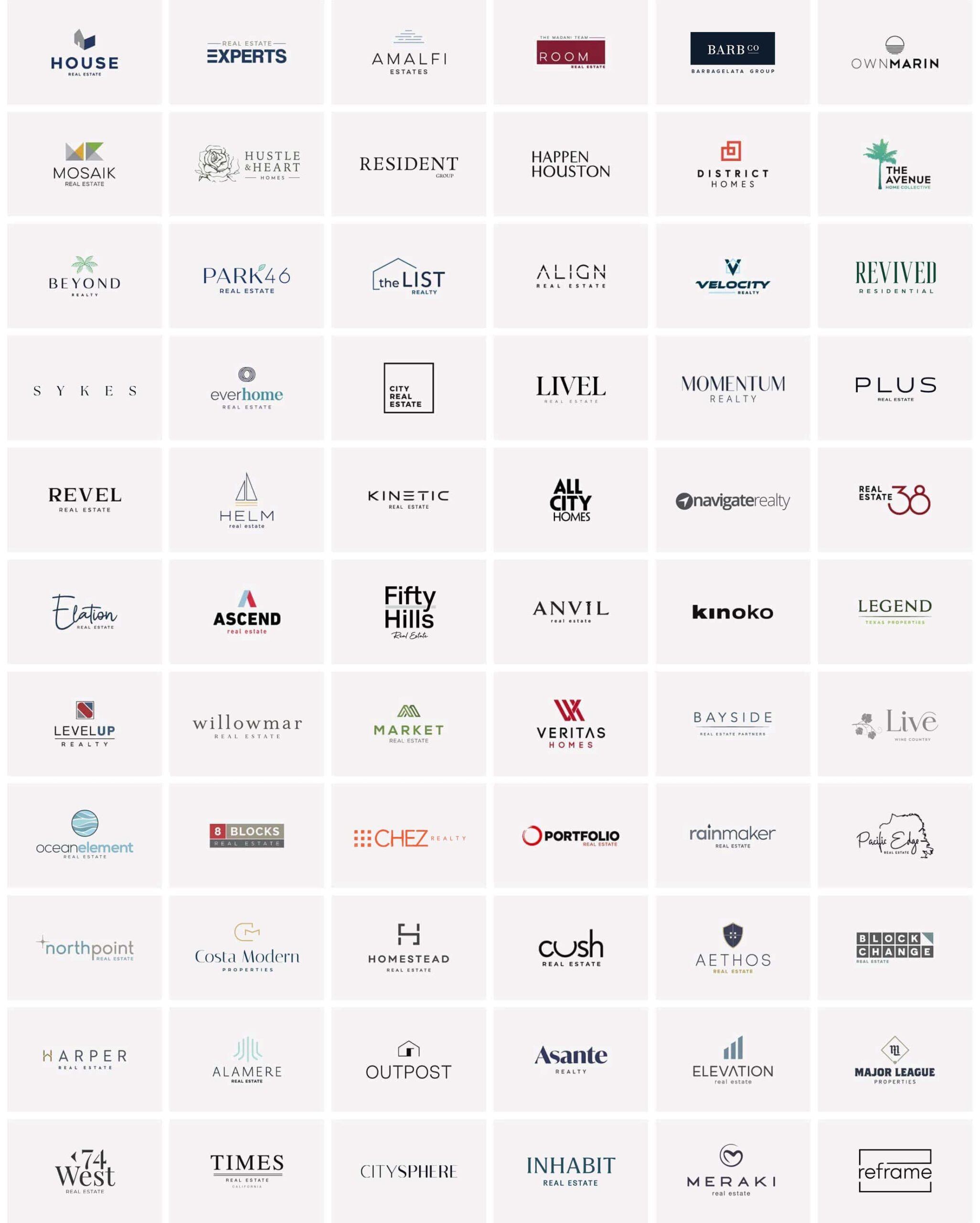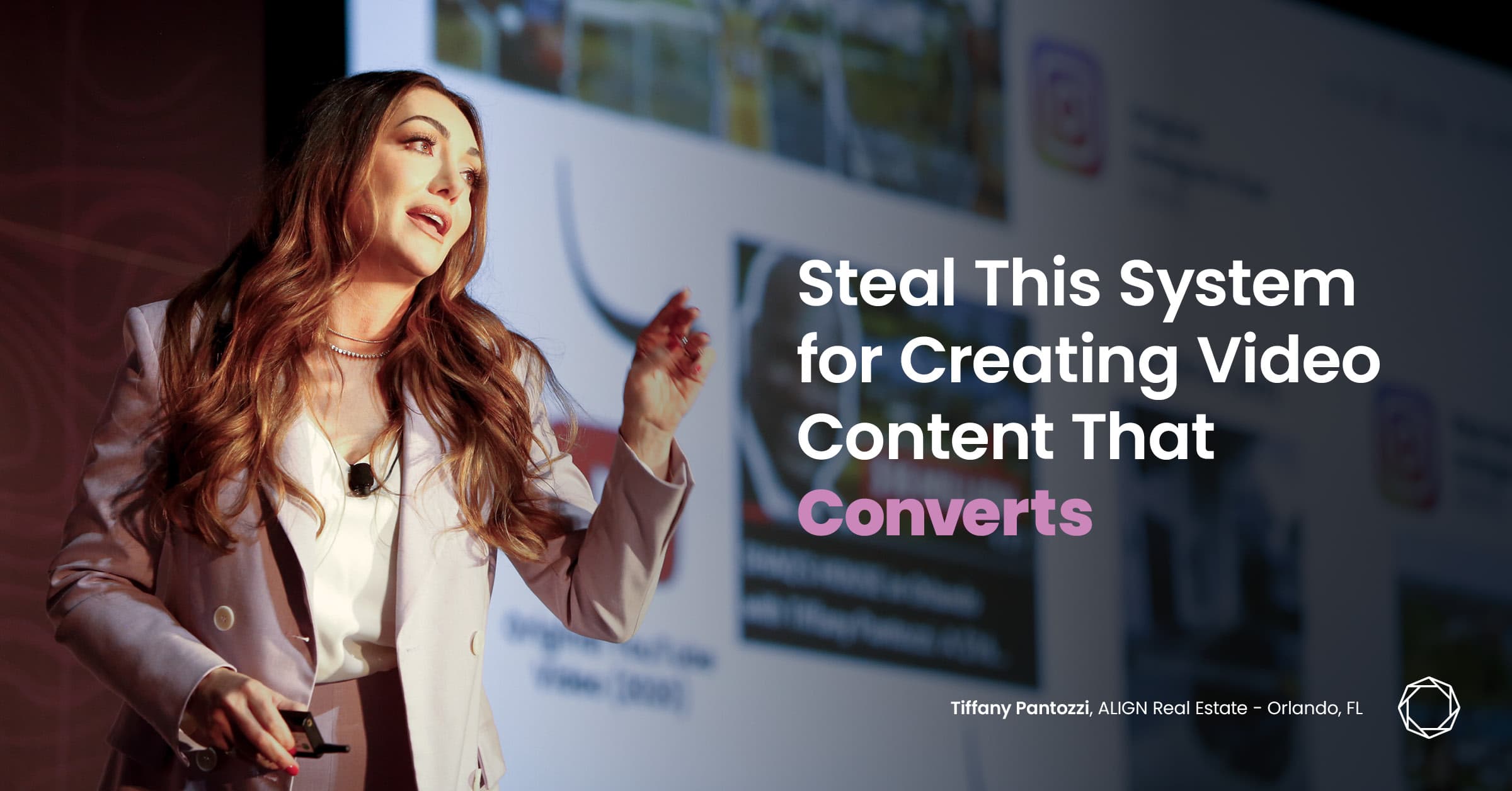
Did you know that listings with at least one video drive 400% more inquiries than those without, per a recent NAR report? Or that 86% of home shoppers turn to videos to learn more about a specific community? Or that 91% of consumers want to see more video content from brands in 2023?
If you’re not building a consistent and enduring real estate video marketing strategy, you could be limiting your ability to connect with prospective customers.
Tiffany Pantozzi, founder of Align Real Estate in Orlando, Florida, has built an extraordinarily successful business by leaning into the power of real estate video marketing. And she has the receipts to prove it — a $1,200 video that generated $5.5 million in buyer leads here, a $1,500 video that secured 13 offers on a home there.
“I always ask my clients how they found me,” said Tiffany. “And many of them are coming through videos I post on social media. So I know this works.”
At Side x Side 2023, she broke down her system for creating and disseminating high-quality videos that capture prospects’ attention. Here’s what she had to say.
Creating Your Channel
1. Think of your social media pages as your digital resume — and tailor them accordingly
Most of your prospects will find your videos on social media, so it’s important that you build your social pages thoughtfully. Right off the bat, you want someone clicking into your page to get a good sense of who you are and what you’re all about.
Because when someone wants to learn more about you, your socials are one of the first places they’ll go. Think of social media as your new resume.
“If you’re not optimizing that little snapshot, you may lose the opportunity to get [someone] to follow you and engage with you,” she said. “You need to make sure that is set up properly.”
Some additional tips:
- Upload an intro video that explains a little bit about who you are and why someone might want to work with you, then make sure that’s one of the first pieces of content a visitor to your page will encounter.
- Add a LinkTree to your bio so that visitors to your page can easily click through to other valuable links (like your website, buyer/seller guides, etc.)
- Make sure your contact information is clearly visible so prospects can get in touch with you.
2. Choose a niche
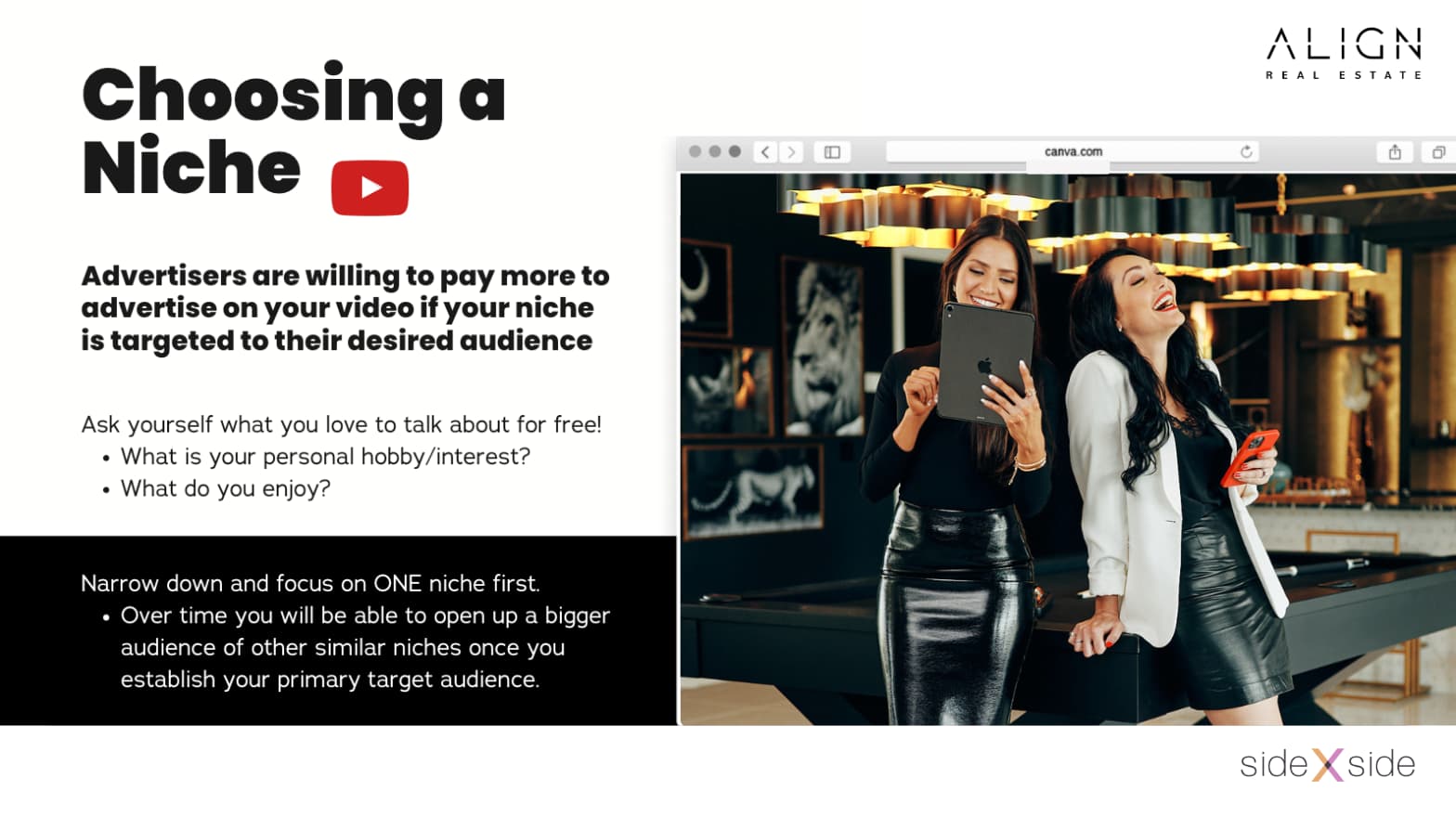
To stand out from the crowd, it’s helpful to identify a niche — one specific thing you’re known for that can be a through line throughout your content.
“There’s a girl in my market who built her business strictly by going to model homes and walking the floor plan,” said Tiffany. “It’s nothing fancy; literally I think it’s her husband holding the camera. And she crushes now with leads from YouTube of buyers who want to buy new construction.”
There are tons of different niches you can choose from. The key, though, is to always bring it back to real estate.
“Maybe if you love to cook, every time you’re in these awesome houses, you’re talking about a great recipe or something really cool you would cook in the house using this killer six-burner stove,” said Tiffany.
Creating Your Content
1. Determine your content buckets
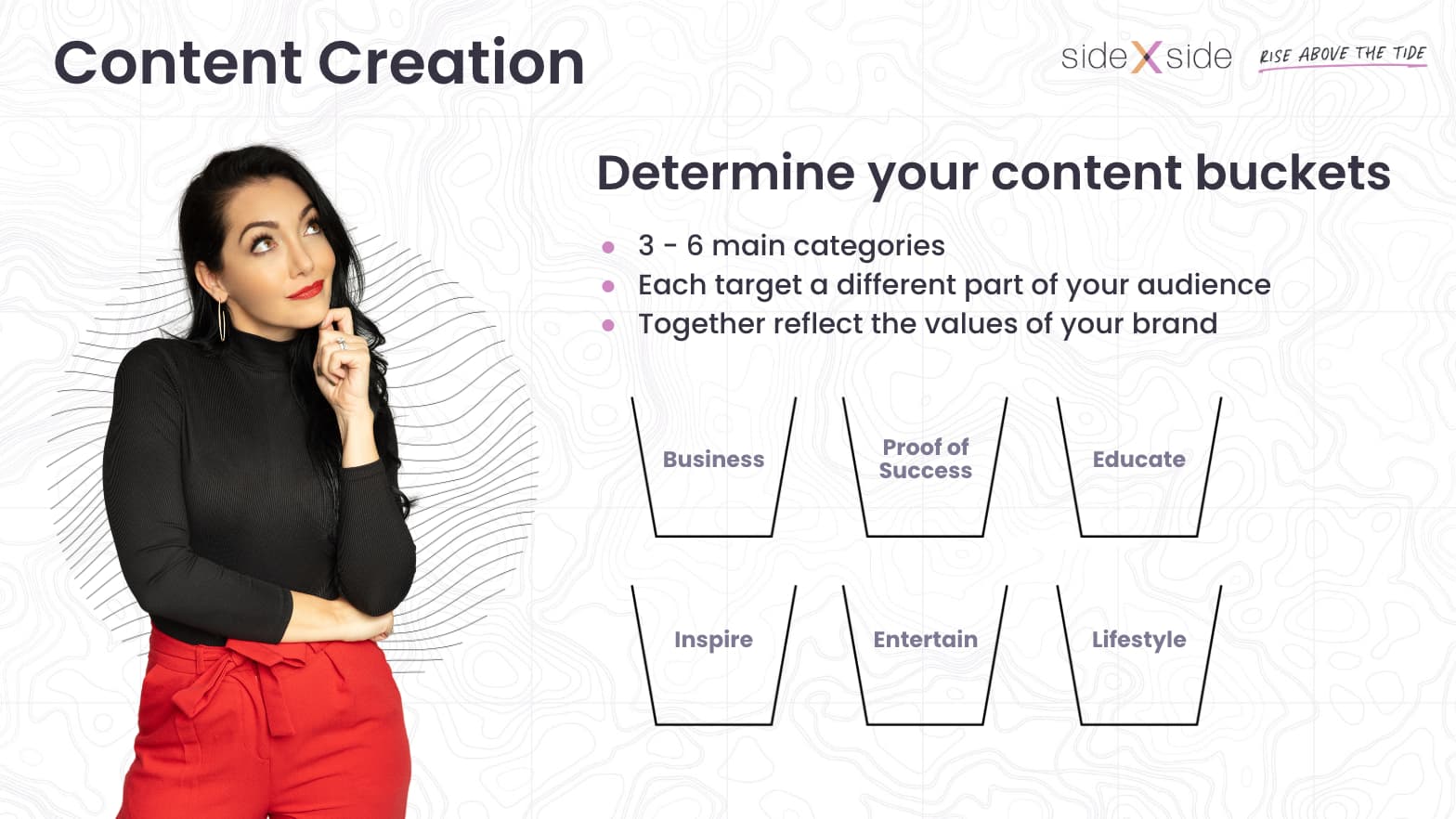
To ensure her followers are getting a consistent stream of high-quality content, Tiffany recommends deciding on certain “content buckets”: aka different themes your content will center around. Each bucket targets a different part of your audience and, together, reflects your overall brand.
Tiffany has six buckets for her social channels: Business, proof of success, educate, inspire, entertain, and lifestyle. “In my business bucket, I could be posting about new listings, luxury tours, new developments, and open houses. In my lifestyle bucket, I could be posting about my family, my friends, client interactions, and local hotspots. There are so many ways you can fill these buckets and create new content that’s fresh and exciting.”
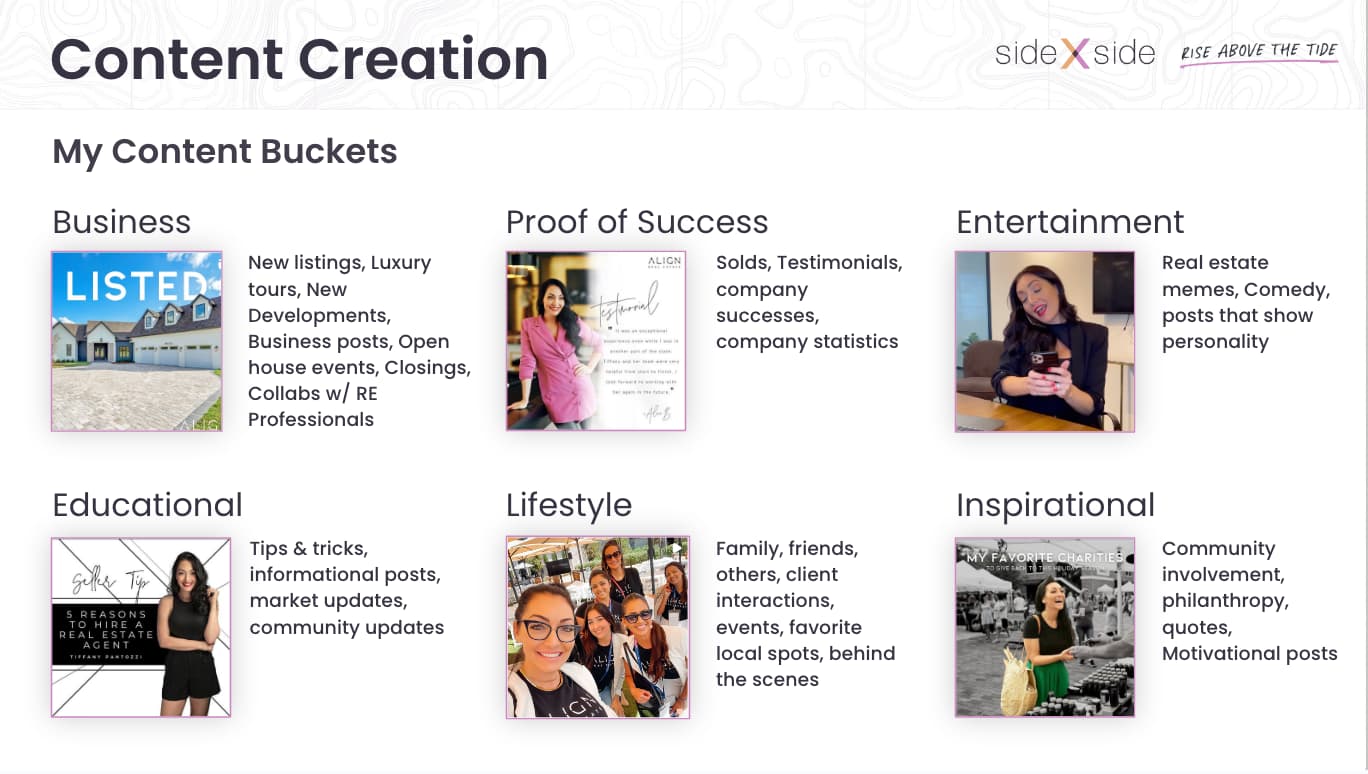
When you build out your content calendar, keep these buckets in mind. Make sure you’re hitting each bucket over the course of a few weeks. Check out Tiffany’s guide Master Your Social Media: 30 Day Content Builder & Calendar for more tips!
2. Plan for a wide range of videos
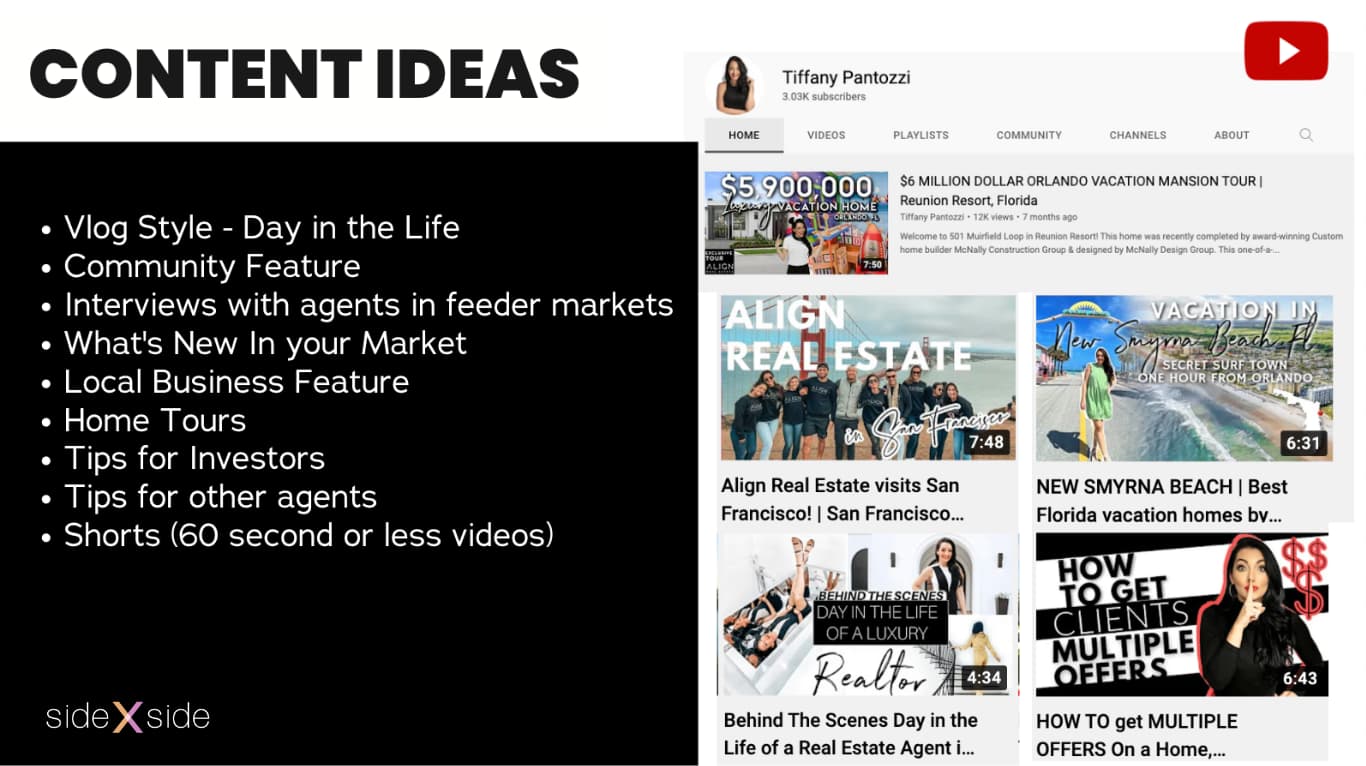
There are a ton of different formats your videos can take — why not experiment?
Some options include:
- “Day in the life”-style vlogs
- Community features, where you showcase the best parts of your community
- Interviews with agents in markets that feed into yours
- Home tours (doesn’t have to be your listing!)
- Tips for investors
- Tips for other agents
3. Consider collaborating
Partnering up with another content creator can be a great way to get your feet in the door, especially if you’re a little camera shy.
“Consider partnering up with a lender, or a title person, or the owner of your coolest local coffee shop for a video,” said Tiffany. “You could be on camera with them interviewing them, or maybe you’re just the person behind the scenes and you’re only talking via voiceover.”
The key is to make sure the person you’re collaborating with aligns with your niche and that the content you’re sharing is valuable to your target audience.
4. Start out simple …
“You can literally buy a $10 stand, put your phone in it, and go sit somewhere,” said Tiffany. “Don’t overcomplicate it.”
For a well-rounded starter video kit, Tiffany recommends:
- Any camera with around 12 megapixels (most newer smartphones will work!)
- A lavalier lapel microphone
- A tripod (e.g., the UBeesize60” Phone Tripod)
- A Gimbal (e.g., the DII OM 4)
- A ring light
- A green screen
- Editing software (e.g., Movavi)
- Design software for creating thumbnails (e.g., Canva)
5. … but plan to invest in your most important videos
You don’t need a professional videographer to get started. Even Tiffany only hires professional videographers for high-impact videos she knows will have a long shelf life, which she refers to as “foundation content.”
Even though Tiffany doesn’t hire a videographer for every video, she does pay someone else to edit her videos for her, which typically costs around $150 a video.
“I’m not a video editor, so I’m intentional about paying someone else to do that for me,” she said.
“That’s not the best use of my time. You should always be asking yourself: How much am I worth on an hourly basis? What’s the return on investment of my time?”
“You should always be asking yourself: What’s the return on investment of my time?”
— Tiffany Pantozzi
6. Schedule filming days
You can post content every day without having to get camera-ready every day. The key is to set aside some time, batch-record your content in bulk, and then post that content over the course of several weeks.
If you switch outfits, it’ll look like you recorded different videos on different days, and you can stretch your content out even longer. “Think about the time you’re investing and make that time work for you!”
7. Consider using a script
If you decide to pay a videographer for a certain video, or if you’re shooting in a location that would be hard to return to, you may want to use a script to ensure you cover everything you want to cover. After all, once you’ve shot your video, you’re stuck with the footage you have.
“I like to use scripts in certain videos where I have a lot of information I want to nail,” said Tiffany. “That way I’m not trying to memorize everything.” Without a script, you may be in danger of rambling.
Check out Tiffany’s Master Your YouTube: Video Content & Script Planner kit.
You can use a teleprompter app on your phone to read your script, so you don’t have to awkwardly look down at a piece of paper. You can also have your script come through in a voiceover.
8. Don’t be afraid to repurpose content
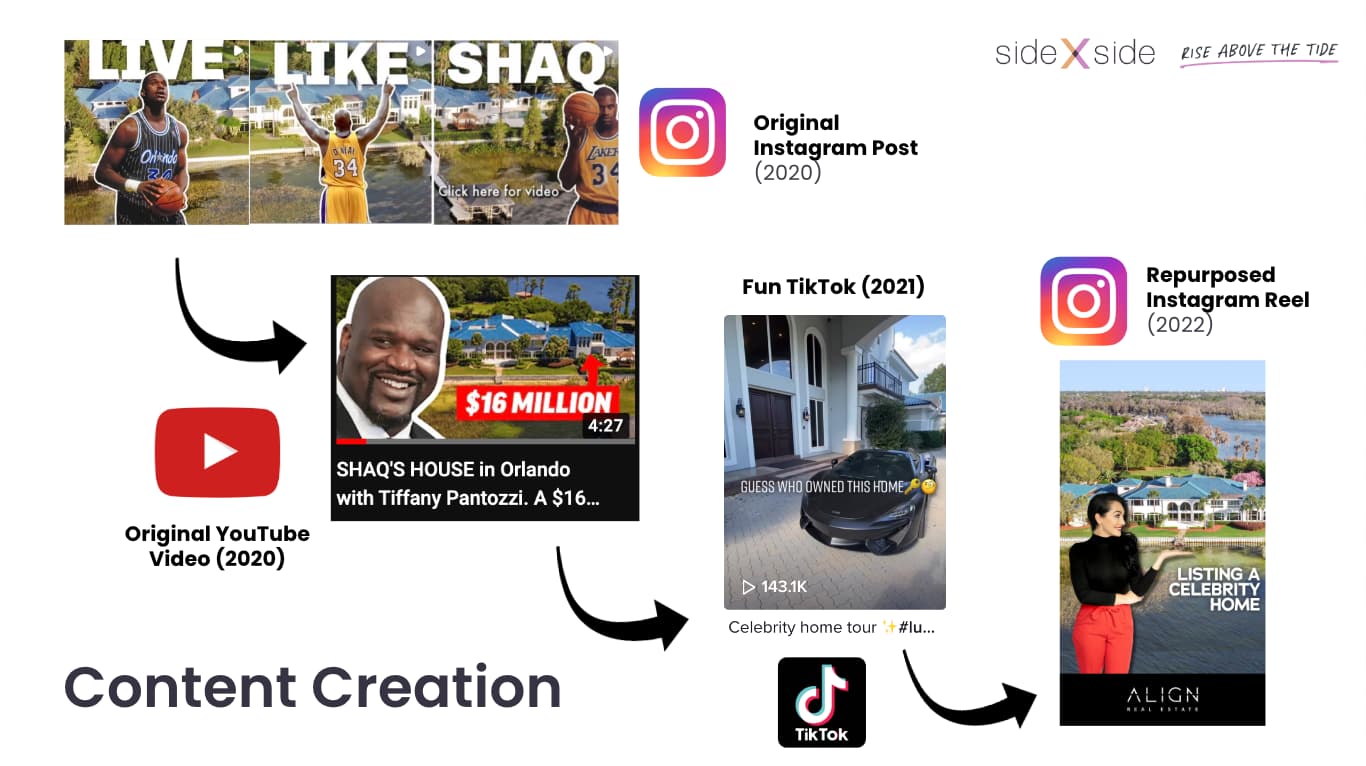
You don’t have to film a brand new video every time you want to post a new piece of content. Try taking one video on one topic and turning it into multiple different, shorter videos.
“Take one video and slice it up,” said Tiffany. “Make an Instagram Reel out of it, put it in a short, put it on TikTok. Maybe do music over part of the video in one cutdown, and in the other do a voiceover. Maximize it as much as absolutely possible because you’re going to be able to create so much content from just that one video.”
9. Don’t get in your own way
If you’re not on video often, it can be tough to get started. If you feel self-conscious, that’s normal. But as Tiffany advised, just start — you’ll get more confident as you go.
“You’ve got to just say, ‘You know what? I’m putting myself out there. I’m doing it in the most authentic way, as my most authentic self, so I can attract the type of clientele that wants to work with someone like me.”
Posting Your Content
1. Find a cadence that works for you (and stick to it)
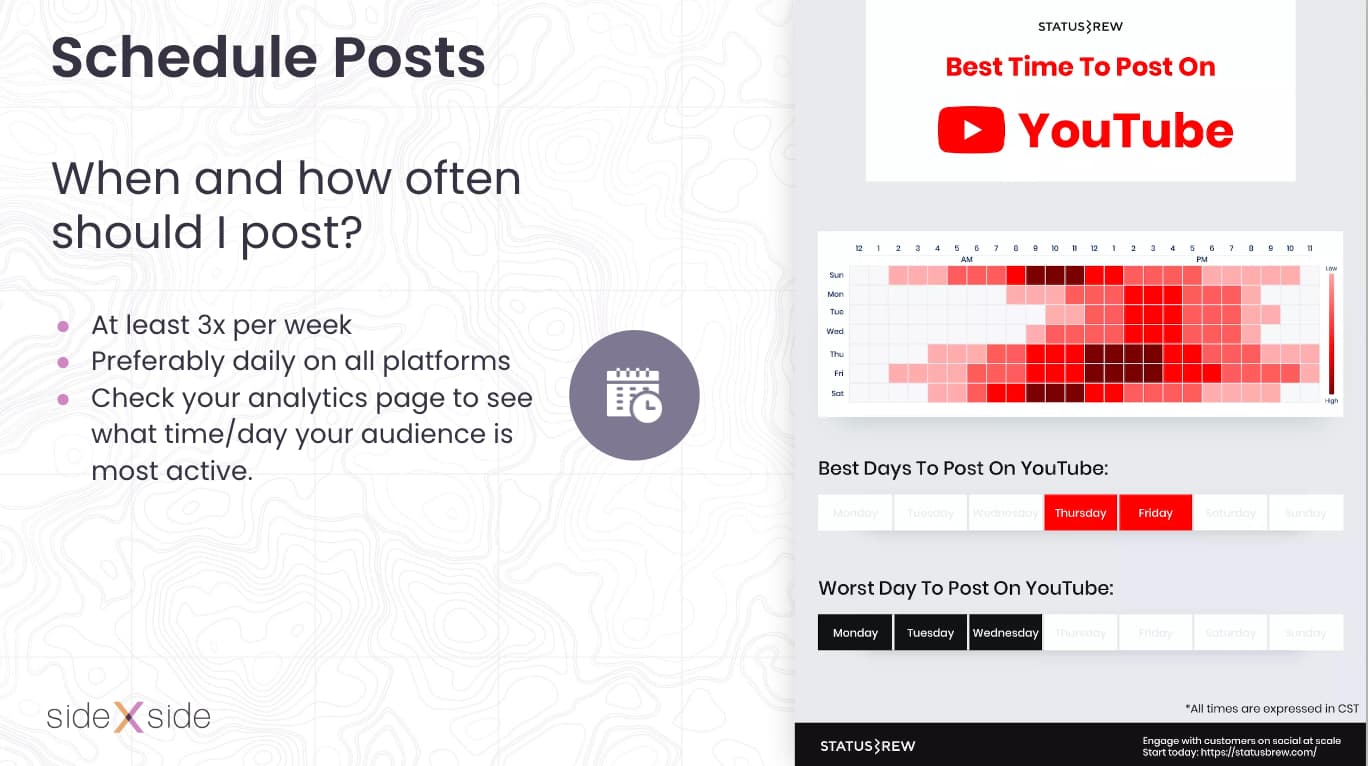
Everyone has a different opinion on how frequently you should be posting. Tiffany’s personal preference is at least three days a week, ideally closer to once a day on each channel.
“What matters most is consistency,” said Tiffany. “Just be consistent. Don’t post one week and then forget for another two. Perception is reality — what people see, they believe. And if they don’t see you out there working and closing deals and sharing information, they won’t think you’re a top agent.”
2. Optimize your videos for maximum reach
Make sure you take time to optimize your videos before posting to increase the likelihood that your target audience sees your content.
You’ll want to make sure you have:
- Attention-grabbing titles & thumbnail images
- A video description optimized for relevant keywords to boost SEO
- Clear data on how each video performs so you can track what’s working
Tiffany recommends Tube Buddy, a browser extension tool that integrates with YouTube and helps content creators grow their channels by assisting with the above. TubeBuddy can also optimize multiple videos in one swoop, saving you valuable time.
She also recommends allowing ads on your YouTube video to increase their reach.
3. Save time with a scheduling app
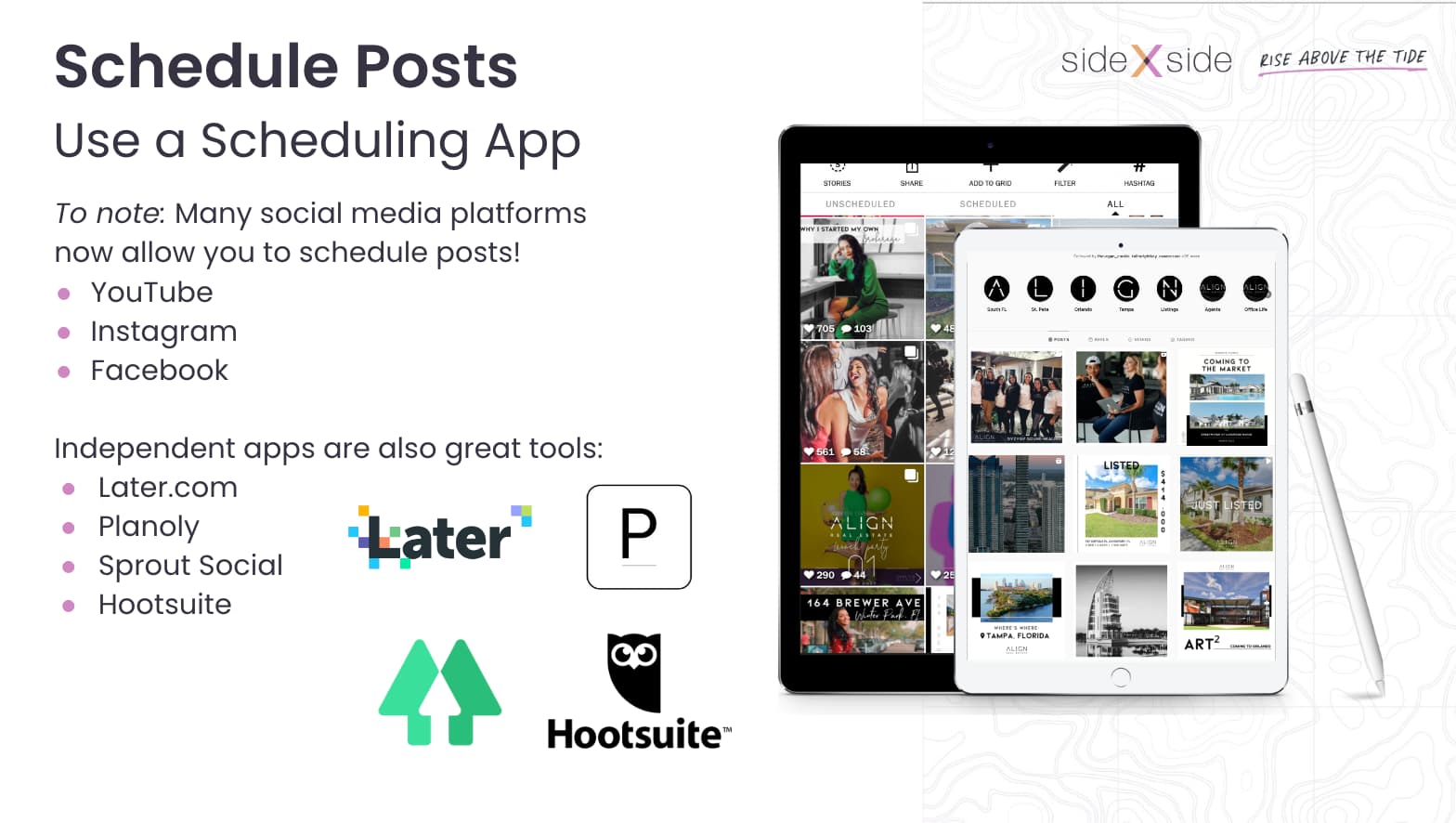
Do yourself the favor and pre-schedule your posts. That way, you can post at the optimal times for your audiences, even if you aren’t available at those times.
Here are some scheduling apps you can use:
- Later.com (this is what Tiffany’s team uses)
- Planoly
- Hootsuite
- Sprout Social
Take the Leap
Tiffany’s final recommendation: “Just get out there and start creating. It’ll pay off.”
By leveraging a system like Tiffany’s, you can set yourself up to produce real estate video marketing that moves the needle — without taking too much time away from actually working with your clients.
